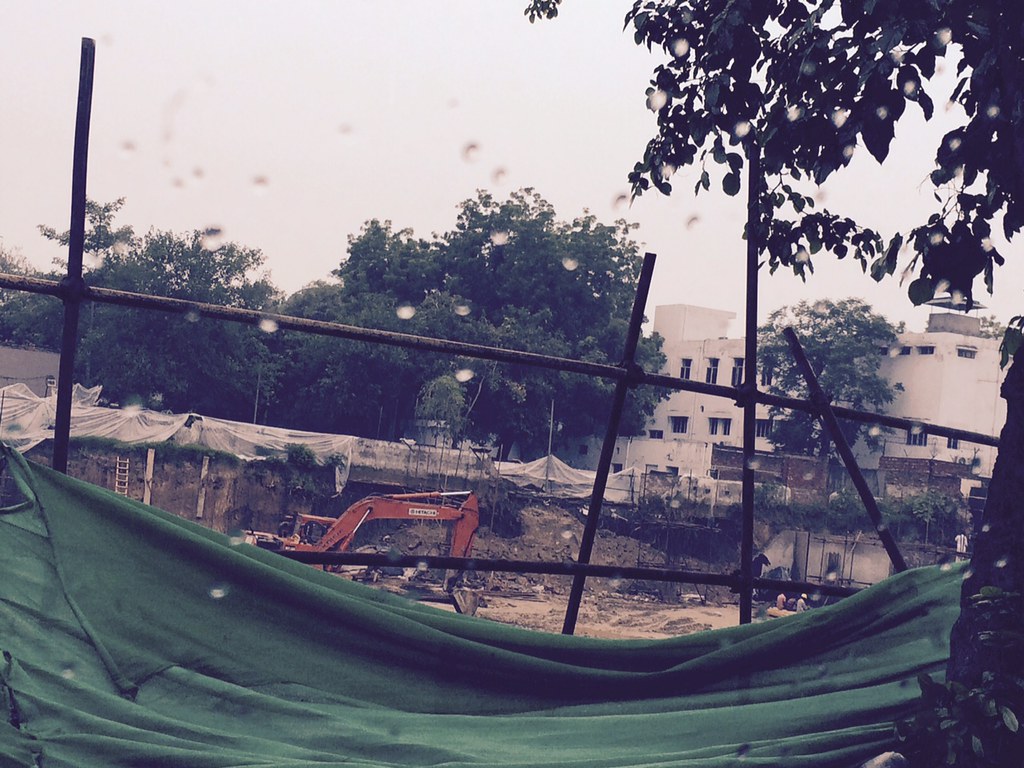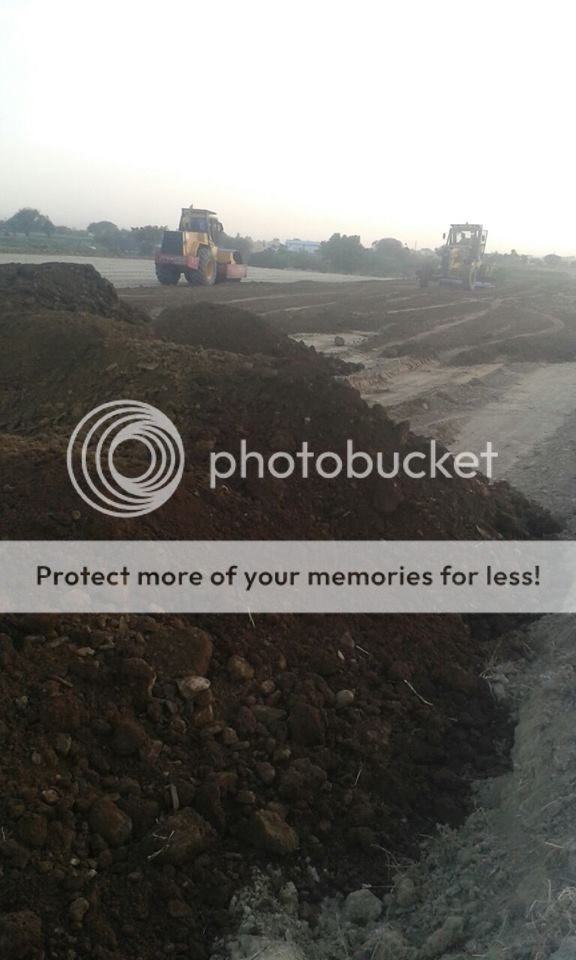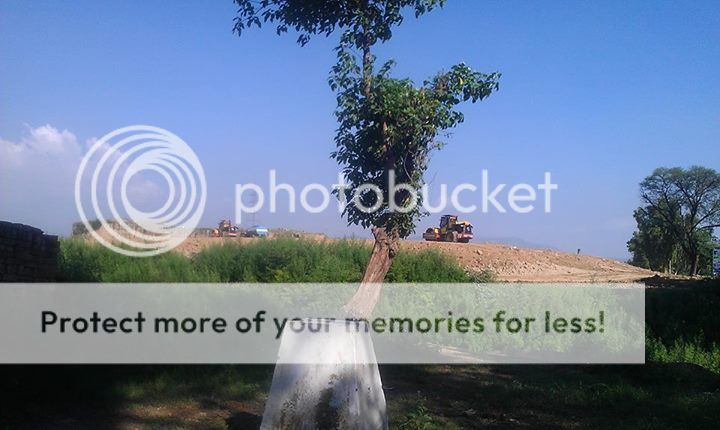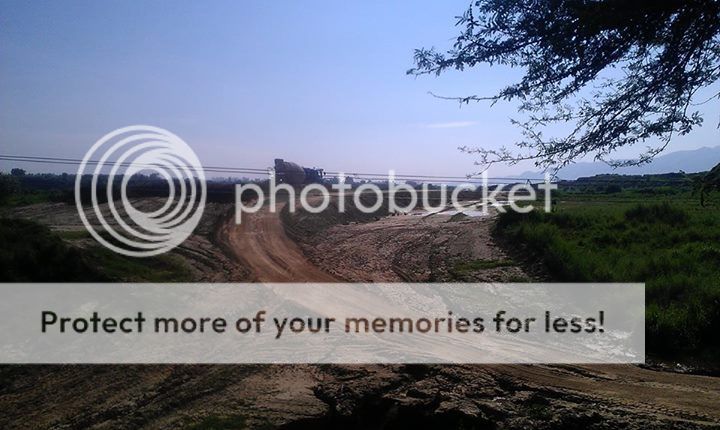How to install the app on iOS
Follow along with the video below to see how to install our site as a web app on your home screen.
Note: This feature may not be available in some browsers.
You are using an out of date browser. It may not display this or other websites correctly.
You should upgrade or use an alternative browser.
You should upgrade or use an alternative browser.
Infrastructure Development in Pakistan
- Thread starter moha199
- Start date
Edevelop
ELITE MEMBER

- Joined
- Feb 2, 2007
- Messages
- 14,735
- Reaction score
- 23
- Country
- Location
Hockey field in District Mardan

Hayatabad Sports Complex Peshawar - Up gradation Continues
Some highlights:
1. New football stadium completed
2. Swimming pool fully upgraded
3. Main hall for indoor sports ready

Green Line: In a rare first, govt asks city’s architects to weigh in on Karachi BRTS
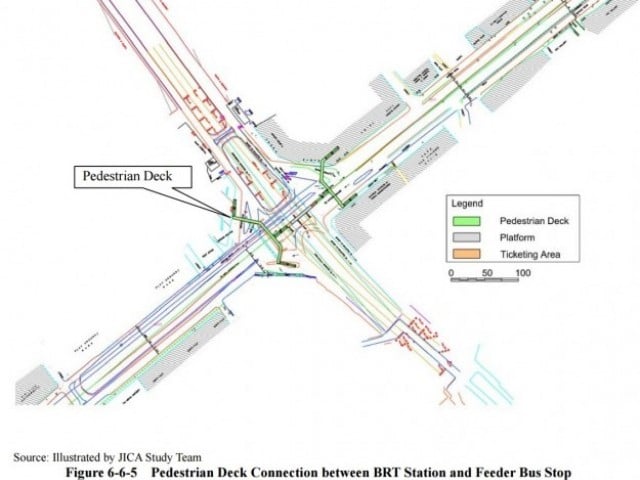
KARACHI: A Sindh government official heading a project asks Karachi’s best architects and planners to give their input on it? Your chances of sighting a unicorn on Sunset Boulevard are higher.
But this is precisely what unfolded at the EOBI office on Thursday with its chairman Sualeh Faruqui at the head. The project he wanted feedback on is the Green bus-rapid transit line from Surjani to Quaid-e-Azam’s Mazaar. This mass transit is the internationally accepted transport solution today and the Green line is one of nine lines the Japanese aid agency mapped for the city. Bahria is eyeing the Blue line and the Chinese the Yellow one. The Japanese have long been interested in the black Karachi Circular Railway. The ADB and ITDP have been involved on the Red line.
Read: The need for mass transit: Legislating a viable transport solution for Karachi
Karachi is the only megacity in the world that doesn’t have mass transit and Nawaz Sharif gave the city Rs16 billion to do it. Almost half of this money is in the accounts of the company created to run development in the city: the Karachi Development Company Ltd. Using a public limited company means that these funds won’t lapse if not used in government coffers by the end of the fiscal year.
The prime minister has tasked Faruqui, who used to work with him as secretary of economic affairs, to push through this project upon his posting back to Karachi. The Green line has been designed by EA Consultants Pvt Ltd which has submitted the environment impact assessment to the Sindh environment protection agency. They hope to start building in September and finish in one year. The design will be placed before the steering committee in a week’s time and if all goes well, the bidding for the contract to build it will open at the end of this month, Faruqui told The Express Tribune.
Read: Will Karachi finally have a mass transit system?
Given that the Green line’s design is being run through its final stages, Faruqui agreed to take feedback from the city’s key planning minds. Invited to the discussion were architects Yawar Jilani of Arcop, Syed Akeel Bilgrami, Husnain Lotia and Shaista Khaliq, EA’s Khawar Ghani, Aqeel Kapadia, Dr M Tahir Soomro (also a former director of Karachi’s mass transit cell) and Tanveer Ahmed, the Institute of Architects of Pakistan’s Komal Parvez and Shahab Ghani, Farida Ghaffar of NED University, Nooruddin Ahmed of the Institute of Engineers of Pakistan, Mumtaz Jilani of Nespak, Roland deSouza of Shehri-CBE, Zahid Farooq of the Urban Resource Centre, development specialist Fazal Noor and several architects from Arcop.
“We have been looking forward to this interface and it’s unfortunate that presentations of this nature don’t happen,” remarked Yawar Jilani. Karachi is a city starved for planning but generally requests to the government from private planners have not been entertained.
After EA’s Tahir Soomro presented the design, the main feedback from the planners was that an overarching authority is essential to manage all the BRTS lines. But the Sindh Mass Transit Authority law is in limbo for now. A centralised IT system to coordinate all bus fleet timings and other moving parts is needed. The elevated parts of the Green line should not destroy 60-year-old trees along the route. The architects also asked if there was a park-and-ride element to the design around the bus stations so people could leave their motorcycles and use the BRTS.

Fazal Noor pointed out that the design didn’t seem to integrate local traffic and the mass transit. What about people who want to come from beyond the 500-metre catchment area? Will they take chingchis or buses to the BRTS stations? And more importantly, given that these areas have been declared high-density zones where real-estate development is expected, is the BRT built to accommodate future population capacities? But most of all, the experts stressed that the bus stations should not be built in isolation but factor in the culture and social needs of their surrounding environment.
What’s the plan?: The EA’s design for the Green Line
The Green line, which is expected to attract the highest ridership from the nine lines, has 10 major intersections. Sakhi Hasan intersection alone gets 380,000 vehicles daily. So EA Consultants Pvt Ltd is designing to ease the congestion by giving priority to BRT buses. According to EA’s Tahir Soomro, the buses have to compete with the existing public transport or the enterprise fails. The buses are air-conditioned. For tickets, no money will physically changes hands as passengers will use smart cards.
EA’s Khawar Ghani spoke about using structures that are “easy to build and cheap to construct and maintain or could be fabricated”. “We are not going to build monuments,” he said, “Something for which you need to give billions of rupees.” Sustainability is key. For example, EA has decided against using glass as dividers at the bus stations because no one will be able to clean it. Ghani pointed out this mistake being made in Islamabad’s BRT stations. “It traps heat and who will clean it,” he said.
The challenges for the Green line design are the electric pylons, existing U-turns, intersections and water lines. But EA is trying to come up with solutions. Another challenge is for the government to create an IT system that manages the entire BRTS network. Faruqui was cognisant of this crucial element. Integration, so that all the moving parts work in unison and standardisation, are essential for BRTS to work in Karachi, he said, adding, for example, “You can’t have a coin-operated system being used by one line and a card on another.”
Follow-up sessions with the private bus operators and city planners and architects are planned with the Sindh government teams working on the BRTS projects.
Green Line: In a rare first, govt asks city’s architects to weigh in on Karachi BRTS - The Express Tribune

Hayatabad Sports Complex Peshawar - Up gradation Continues
Some highlights:
1. New football stadium completed
2. Swimming pool fully upgraded
3. Main hall for indoor sports ready

Green Line: In a rare first, govt asks city’s architects to weigh in on Karachi BRTS

KARACHI: A Sindh government official heading a project asks Karachi’s best architects and planners to give their input on it? Your chances of sighting a unicorn on Sunset Boulevard are higher.
But this is precisely what unfolded at the EOBI office on Thursday with its chairman Sualeh Faruqui at the head. The project he wanted feedback on is the Green bus-rapid transit line from Surjani to Quaid-e-Azam’s Mazaar. This mass transit is the internationally accepted transport solution today and the Green line is one of nine lines the Japanese aid agency mapped for the city. Bahria is eyeing the Blue line and the Chinese the Yellow one. The Japanese have long been interested in the black Karachi Circular Railway. The ADB and ITDP have been involved on the Red line.
Read: The need for mass transit: Legislating a viable transport solution for Karachi
Karachi is the only megacity in the world that doesn’t have mass transit and Nawaz Sharif gave the city Rs16 billion to do it. Almost half of this money is in the accounts of the company created to run development in the city: the Karachi Development Company Ltd. Using a public limited company means that these funds won’t lapse if not used in government coffers by the end of the fiscal year.
The prime minister has tasked Faruqui, who used to work with him as secretary of economic affairs, to push through this project upon his posting back to Karachi. The Green line has been designed by EA Consultants Pvt Ltd which has submitted the environment impact assessment to the Sindh environment protection agency. They hope to start building in September and finish in one year. The design will be placed before the steering committee in a week’s time and if all goes well, the bidding for the contract to build it will open at the end of this month, Faruqui told The Express Tribune.
Read: Will Karachi finally have a mass transit system?
Given that the Green line’s design is being run through its final stages, Faruqui agreed to take feedback from the city’s key planning minds. Invited to the discussion were architects Yawar Jilani of Arcop, Syed Akeel Bilgrami, Husnain Lotia and Shaista Khaliq, EA’s Khawar Ghani, Aqeel Kapadia, Dr M Tahir Soomro (also a former director of Karachi’s mass transit cell) and Tanveer Ahmed, the Institute of Architects of Pakistan’s Komal Parvez and Shahab Ghani, Farida Ghaffar of NED University, Nooruddin Ahmed of the Institute of Engineers of Pakistan, Mumtaz Jilani of Nespak, Roland deSouza of Shehri-CBE, Zahid Farooq of the Urban Resource Centre, development specialist Fazal Noor and several architects from Arcop.
“We have been looking forward to this interface and it’s unfortunate that presentations of this nature don’t happen,” remarked Yawar Jilani. Karachi is a city starved for planning but generally requests to the government from private planners have not been entertained.
After EA’s Tahir Soomro presented the design, the main feedback from the planners was that an overarching authority is essential to manage all the BRTS lines. But the Sindh Mass Transit Authority law is in limbo for now. A centralised IT system to coordinate all bus fleet timings and other moving parts is needed. The elevated parts of the Green line should not destroy 60-year-old trees along the route. The architects also asked if there was a park-and-ride element to the design around the bus stations so people could leave their motorcycles and use the BRTS.

Fazal Noor pointed out that the design didn’t seem to integrate local traffic and the mass transit. What about people who want to come from beyond the 500-metre catchment area? Will they take chingchis or buses to the BRTS stations? And more importantly, given that these areas have been declared high-density zones where real-estate development is expected, is the BRT built to accommodate future population capacities? But most of all, the experts stressed that the bus stations should not be built in isolation but factor in the culture and social needs of their surrounding environment.
What’s the plan?: The EA’s design for the Green Line
The Green line, which is expected to attract the highest ridership from the nine lines, has 10 major intersections. Sakhi Hasan intersection alone gets 380,000 vehicles daily. So EA Consultants Pvt Ltd is designing to ease the congestion by giving priority to BRT buses. According to EA’s Tahir Soomro, the buses have to compete with the existing public transport or the enterprise fails. The buses are air-conditioned. For tickets, no money will physically changes hands as passengers will use smart cards.
EA’s Khawar Ghani spoke about using structures that are “easy to build and cheap to construct and maintain or could be fabricated”. “We are not going to build monuments,” he said, “Something for which you need to give billions of rupees.” Sustainability is key. For example, EA has decided against using glass as dividers at the bus stations because no one will be able to clean it. Ghani pointed out this mistake being made in Islamabad’s BRT stations. “It traps heat and who will clean it,” he said.
The challenges for the Green line design are the electric pylons, existing U-turns, intersections and water lines. But EA is trying to come up with solutions. Another challenge is for the government to create an IT system that manages the entire BRTS network. Faruqui was cognisant of this crucial element. Integration, so that all the moving parts work in unison and standardisation, are essential for BRTS to work in Karachi, he said, adding, for example, “You can’t have a coin-operated system being used by one line and a card on another.”
Follow-up sessions with the private bus operators and city planners and architects are planned with the Sindh government teams working on the BRTS projects.
Green Line: In a rare first, govt asks city’s architects to weigh in on Karachi BRTS - The Express Tribune
PurpleButcher
FULL MEMBER

- Joined
- Oct 31, 2008
- Messages
- 1,260
- Reaction score
- 3
- Country
- Location
Amazingly Page 420 is filled with N League projects 

Edevelop
ELITE MEMBER

- Joined
- Feb 2, 2007
- Messages
- 14,735
- Reaction score
- 23
- Country
- Location
Biometric Attendance System has been launched in 38 DHQs and 100 THQs across Punjab to make health delivery network effective and to improve health services to citizen by ensuring presence and punctuality of doctors, administrative staff and other staff at hospitals during duty hours.
A comprehensive training was conducted on 23rd July 2015 for the focal persons of DHQ and THQ Hospitals and they were briefed about key features including Enrollment, Roster Management - Shift wise and Leave Management.




Children's Hospital in Faisalabad




A comprehensive training was conducted on 23rd July 2015 for the focal persons of DHQ and THQ Hospitals and they were briefed about key features including Enrollment, Roster Management - Shift wise and Leave Management.




Children's Hospital in Faisalabad




Muhammad Omar
ELITE MEMBER

- Joined
- Feb 3, 2014
- Messages
- 13,558
- Reaction score
- 15
- Country
- Location
Muhammad Omar
ELITE MEMBER

- Joined
- Feb 3, 2014
- Messages
- 13,558
- Reaction score
- 15
- Country
- Location
Muhammad Omar
ELITE MEMBER

- Joined
- Feb 3, 2014
- Messages
- 13,558
- Reaction score
- 15
- Country
- Location
E-11 Islamabad Fortune Empire





LAHORE Sustainable Development of Walled City







LAHORE Sustainable Development of Walled City


Muhammad Omar
ELITE MEMBER

- Joined
- Feb 3, 2014
- Messages
- 13,558
- Reaction score
- 15
- Country
- Location
SADDAR Parsa Citi
Block A & B

Block C & D

Block A & B

Block C & D

Muhammad Omar
ELITE MEMBER

- Joined
- Feb 3, 2014
- Messages
- 13,558
- Reaction score
- 15
- Country
- Location
Jail Road Signal Free Project


Orange Line Metro Train Lahore

Orange Line Metro Train Lahore
ghazi52
PDF THINK TANK: ANALYST

- Joined
- Mar 21, 2007
- Messages
- 101,643
- Reaction score
- 106
- Country
- Location
.....................................Besham-Chilas Section
Bridge being constructed

Dassu HPP related construction




Primitive Raft

There is also a solar power plant being constructed to power the tunnels' systems. It is located ~100m beside the first tunnel's entrance (the 18km one).
Tunnel 1 & 2


...............
Bridge being constructed

Dassu HPP related construction




Primitive Raft

There is also a solar power plant being constructed to power the tunnels' systems. It is located ~100m beside the first tunnel's entrance (the 18km one).
Tunnel 1 & 2


...............
Similar threads
- Replies
- 36
- Views
- 1K
- Replies
- 5
- Views
- 393
- Replies
- 4
- Views
- 269
Latest posts
-
-
-
Pakistani firm wins legal battle against Canadian company at int’l court
- Latest: muhammadhafeezmalik
Pakistan Affairs Latest Posts
-
Pakistani firm wins legal battle against Canadian company at int’l court
- Latest: muhammadhafeezmalik
-
Naya Pakistan to Naya Afghanistani , New Cooking Tools in backward Afghanistan
- Latest: muhammadhafeezmalik


